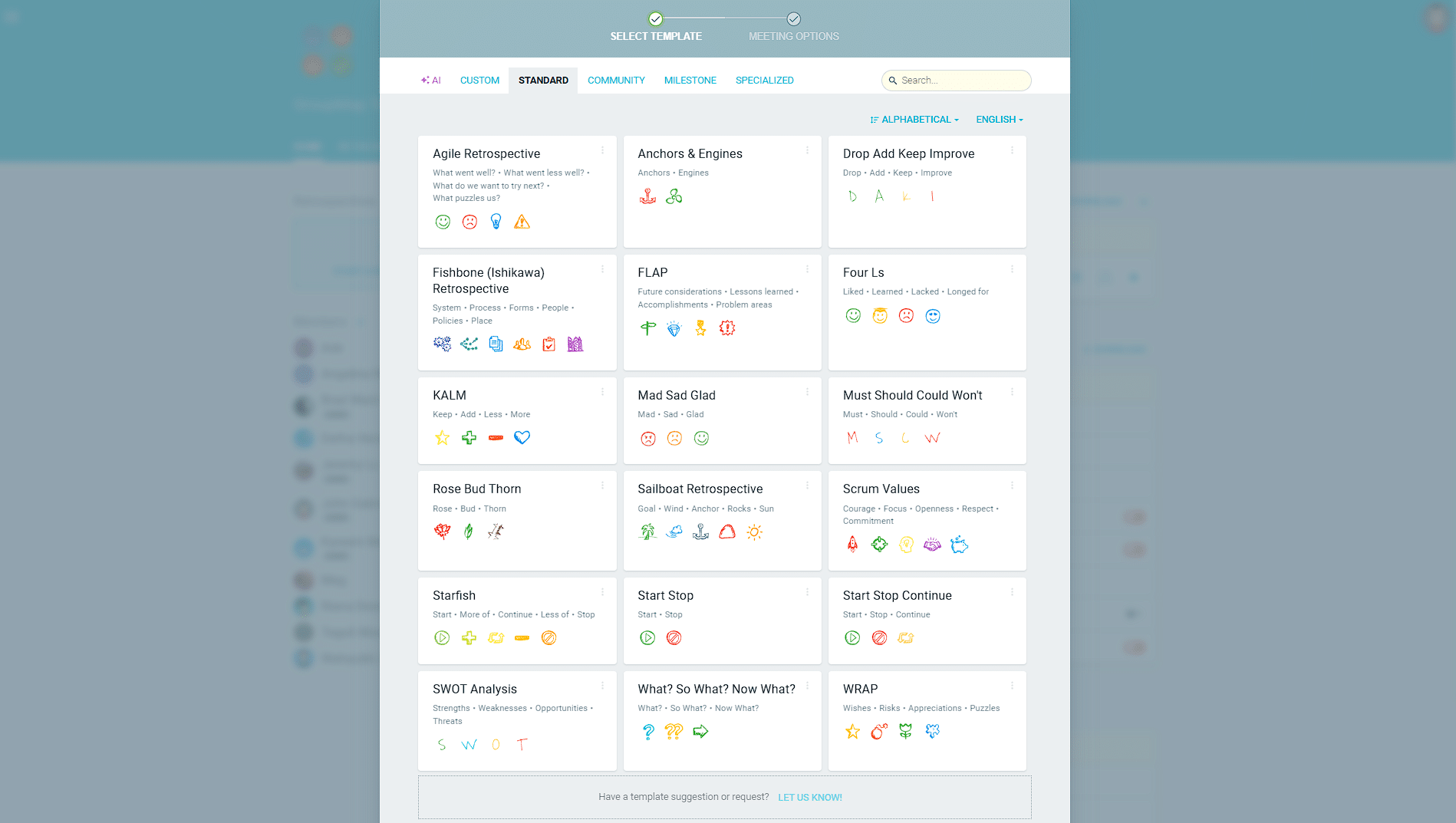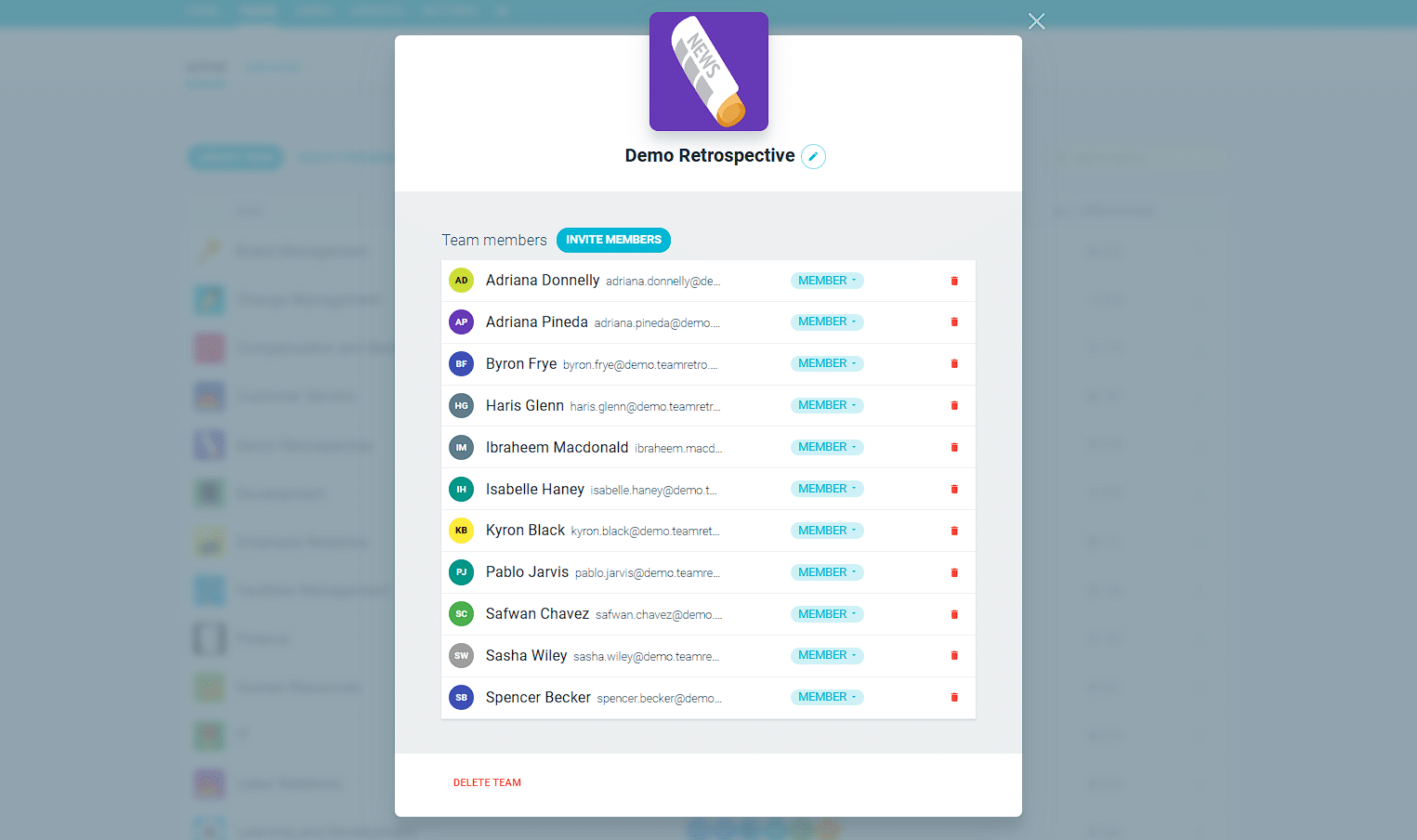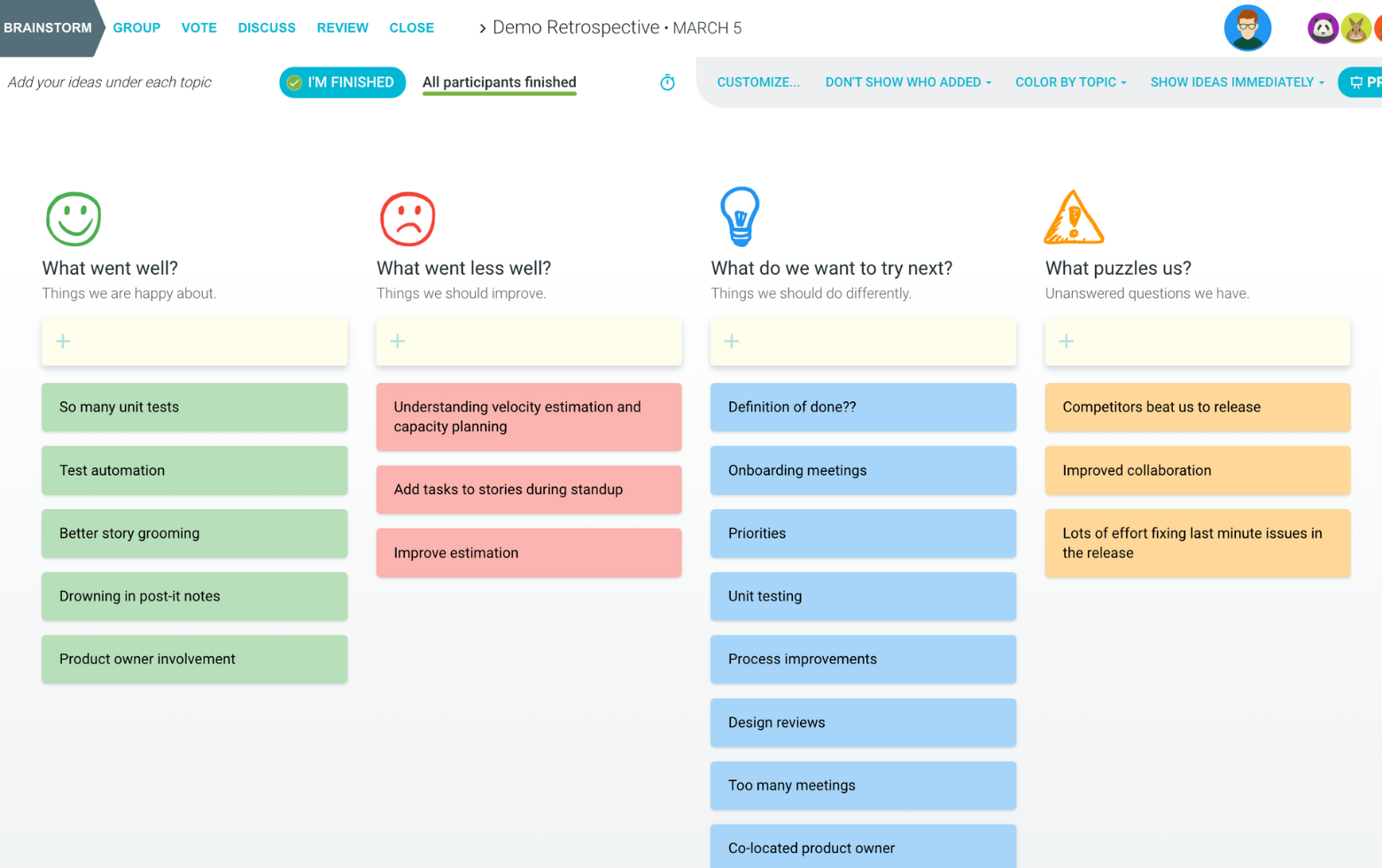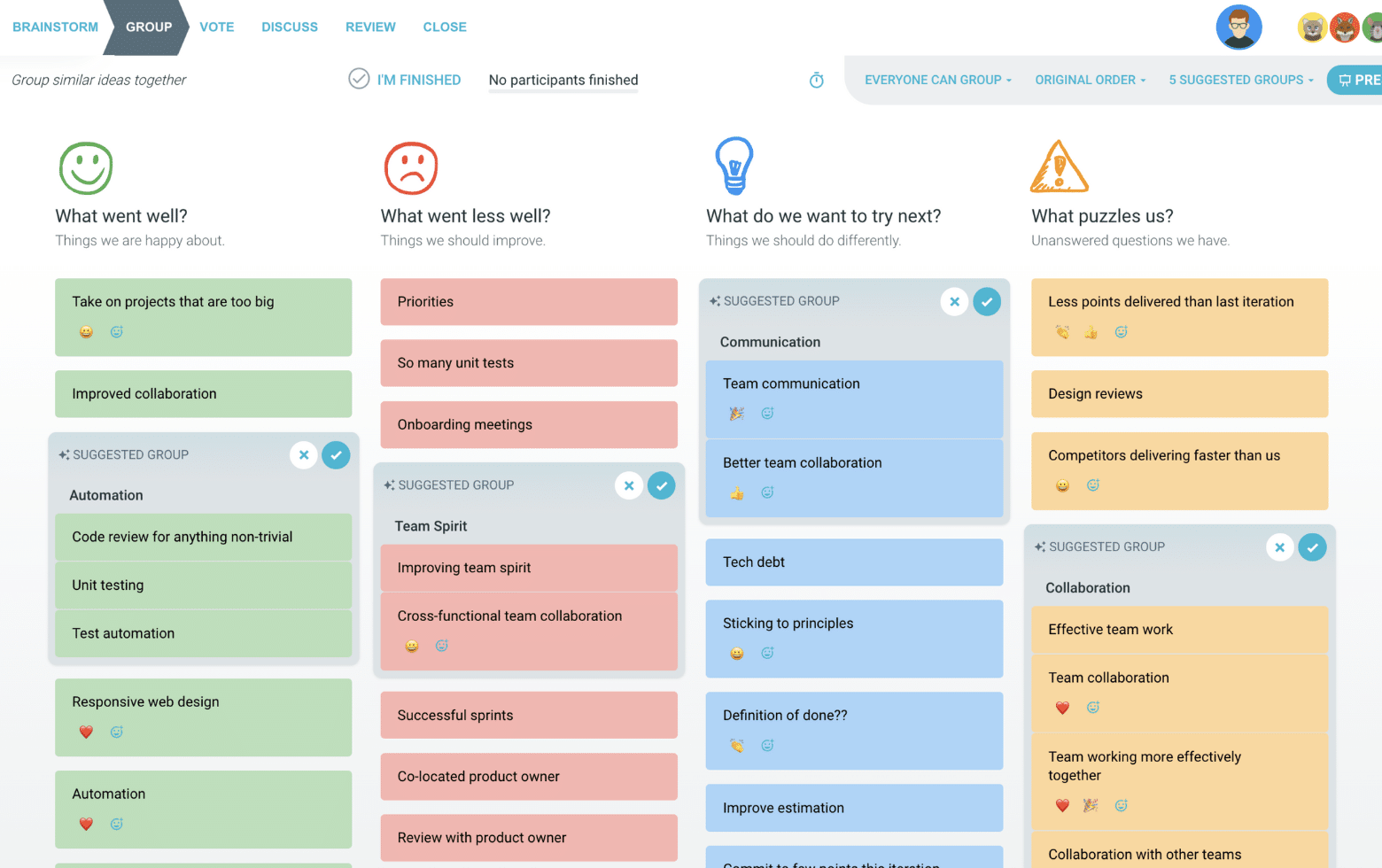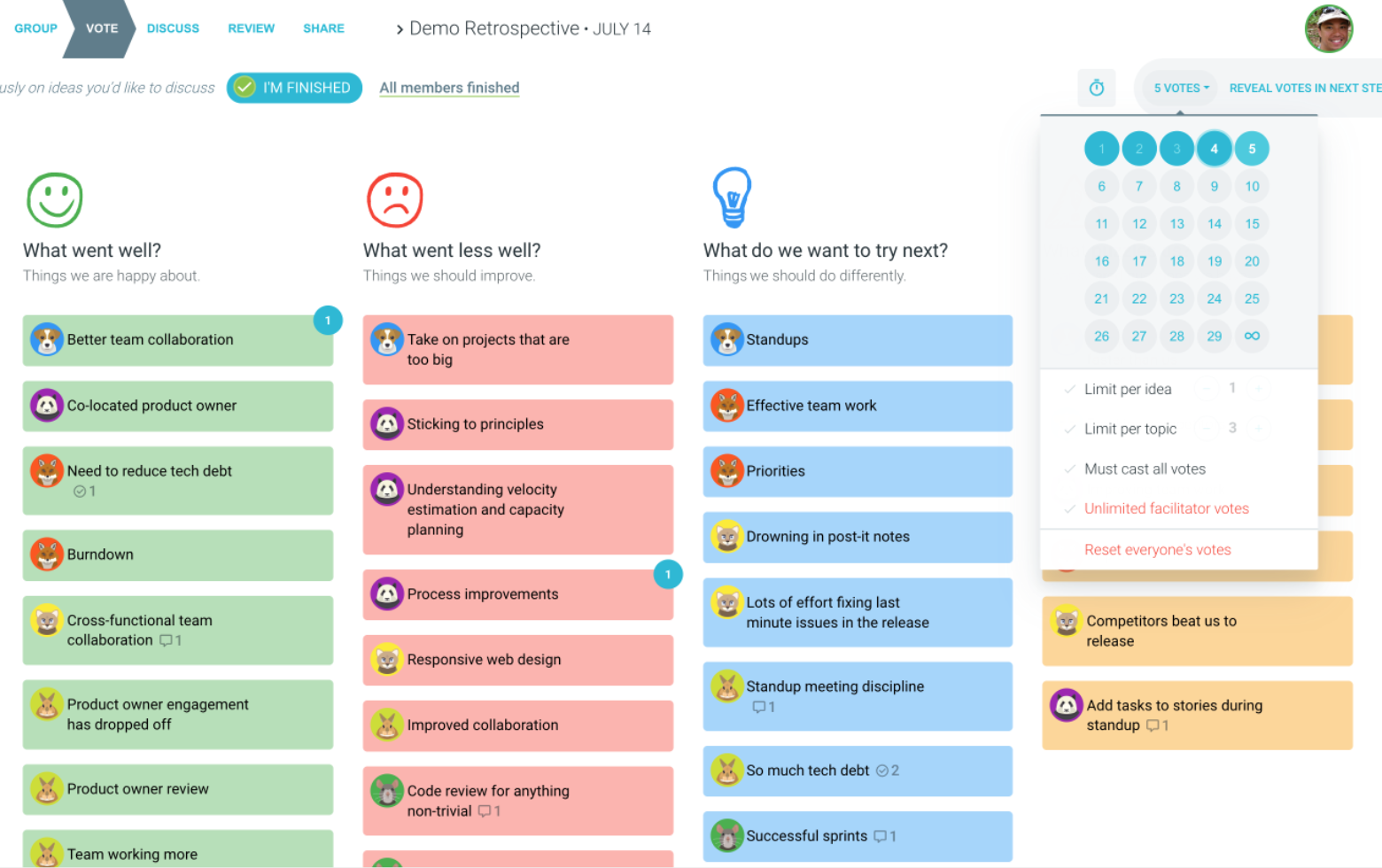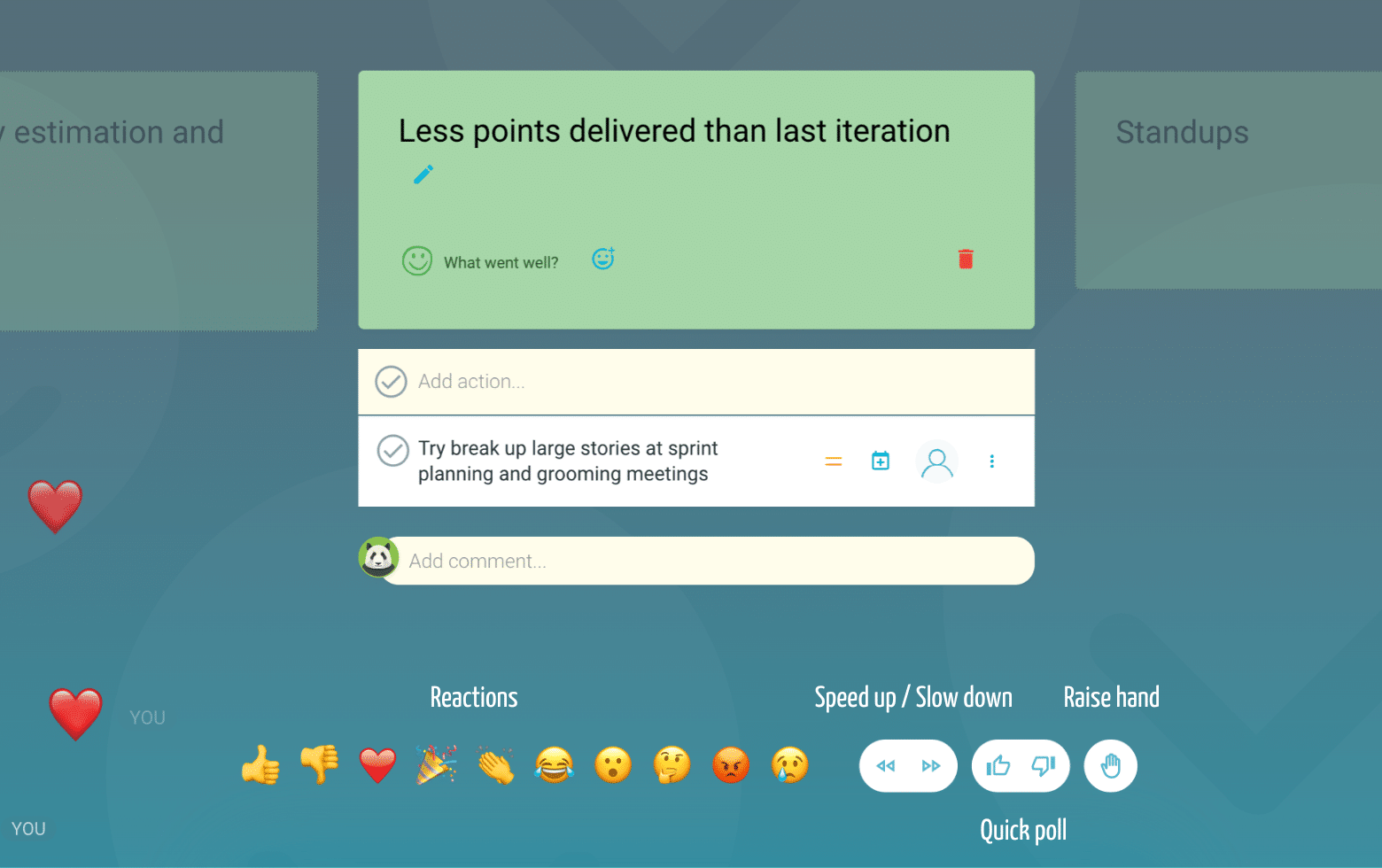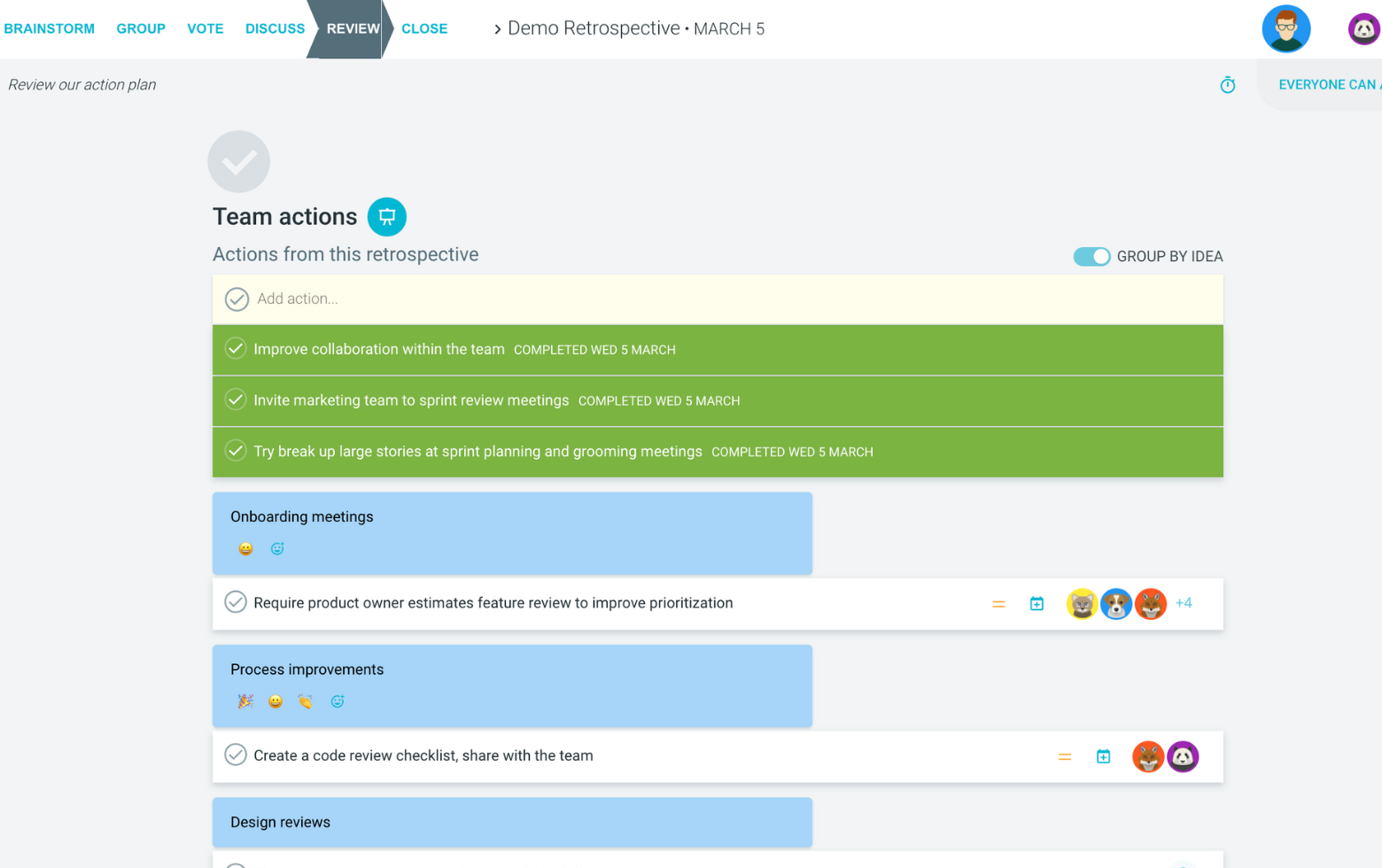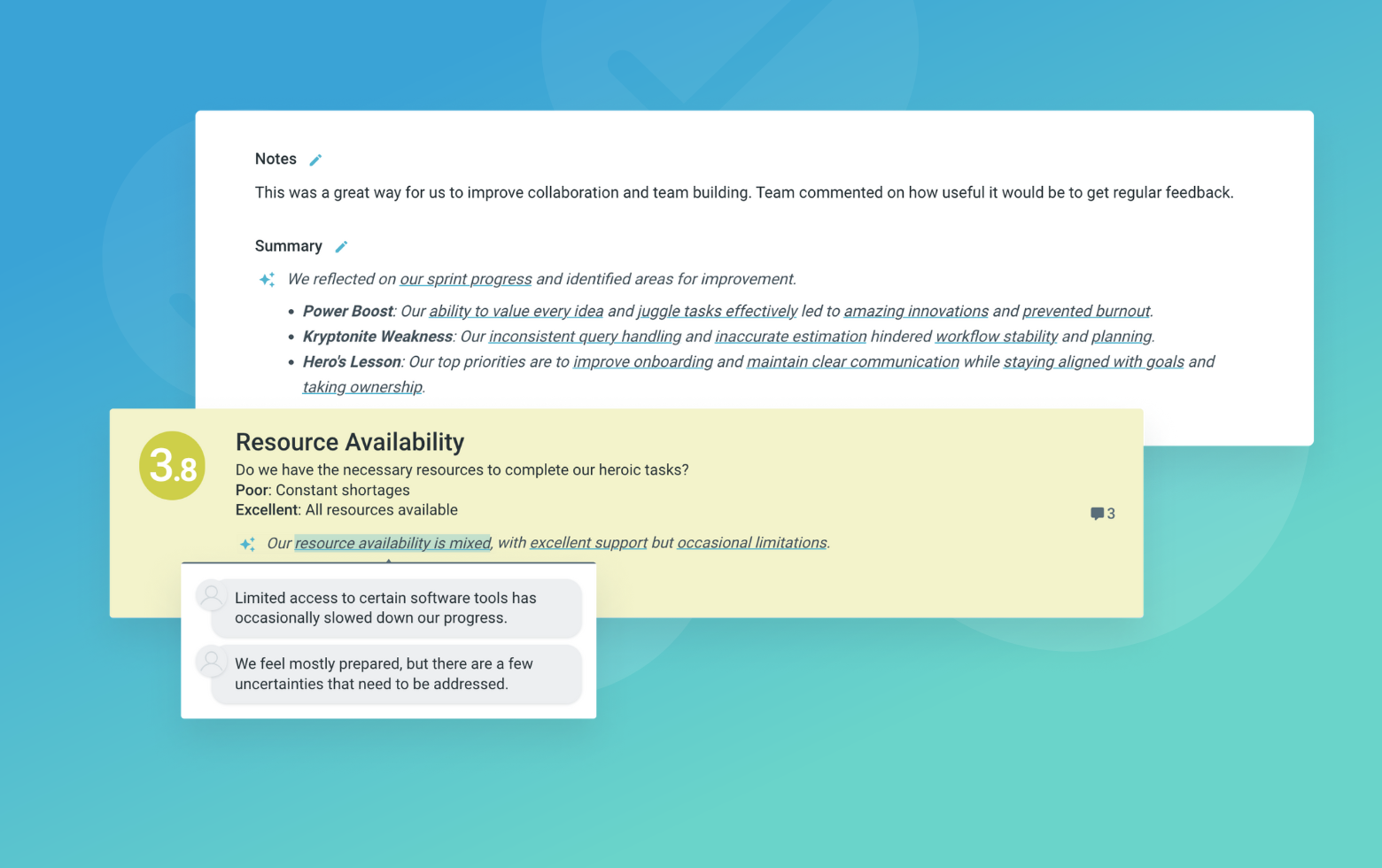The NFL Retrospective transforms traditional agile retrospectives into an engaging format inspired by American Football. Drawing parallels between team sports and project delivery, this template helps teams analyze their performance using familiar NFL concepts.
Just as football teams review game footage and strategize for upcoming matches, this retrospective framework enables teams to examine their achievements (Touchdowns), constraints (Lines of Scrimmage), setbacks (Interceptions and Tackles), and future strategies (The Next Plays). This sports-themed approach makes retrospectives more engaging while maintaining their effectiveness in driving continuous improvement.
This format is particularly effective for teams who appreciate sports metaphors or want to energize their retrospective routine. It helps transform potentially challenging conversations about team performance into more approachable discussions using familiar football terminology.
What is The American Football (NFL) Retrospective
Touchdowns
What key outputs did we deliver?
Focus on celebrating wins and successful deliverables. Encourage team members to highlight both major victories and smaller achievements that contributed to overall success. Consider both individual and team accomplishments.
Lines of Scrimmage
What boundaries do we keep in mind
Discuss constraints, rules, and limitations that affect the team's work. Help the team identify both necessary boundaries that protect quality and unnecessary restrictions that might need challenging.
Interceptions and Tackles
What didn't go to plan? What slowed us down?
Create a safe space for discussing challenges and setbacks. Focus on identifying patterns and systemic issues rather than assigning blame. Encourage honest reflection about both technical and team challenges.
The next plays
What do we want to try next?
Guide the team in developing actionable strategies for improvement. Encourage specific, measurable suggestions rather than vague ideas. Focus on changes that can be implemented in the next sprint or iteration.
Suggested icebreaker questions
- If our team were an NFL team, what would our team name and mascot be, and why?
- What's your favorite comeback story (in sports or technology) and what made it successful?
Ideas and tips for your retrospective meeting
- Keep the sports metaphors consistent but don't let them overshadow the actual retrospective goals
- Consider using NFL-style statistics or metrics to visualize team performance trends
- Rotate the role of 'coach' (facilitator) to give different team members leadership experience
- Use a timer to keep discussions focused, just like quarters in a football game
- Create a 'playbook' of successful strategies identified during retrospectives
- Ensure the sports theme doesn't exclude team members who aren't football fans by explaining concepts clearly
.
How to run effective meetings with TeamRetro
Start Your Session in a Click
Log into TeamRetro and choose your template. Customise questions and the workflow to create your perfect retro for your team.
Create Your Team Easily – No Separate Accounts Needed
Brainstorm Individually – Free From Bias
Smart Grouping for Faster Insights
Fair, Flexible, and Fast Voting
Engage, React, and Capture Key Insights
Walk your team through ideas one by one with Presentation Mode. Stay in sync, spark real-time discussions, and capture feedback with comments, live reactions, and polls—all in one place.
Turn Ideas Into Action
Propose next steps with team buy-in, get AI-powered action suggestions, and keep everything in one place. Committed actions sync to your personal dashboard and integrate with your workflow tools—keeping you on track.
Save, Share, and Stay on Track
Get quick AI-powered summaries, add facilitator notes, and store retrospectives in your library for easy access. Schedule your next session and track published actions to keep your team accountable at the next retro.
Turn Team Data into Actionable Insights
Uncover trends, common themes, and key engagement metrics at a glance. Track sentiment shifts, analyze conversations, and monitor completed actions to drive continuous improvement.
